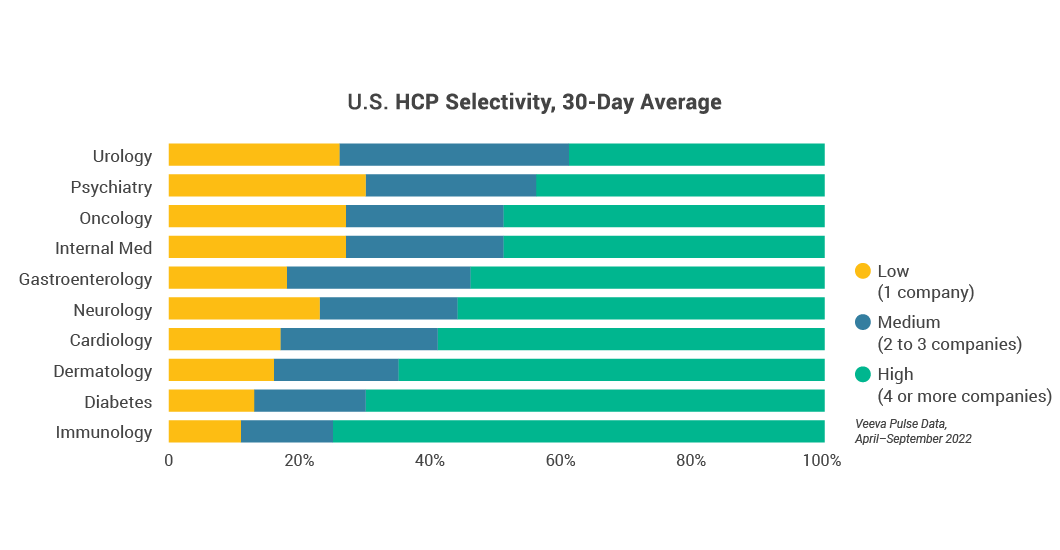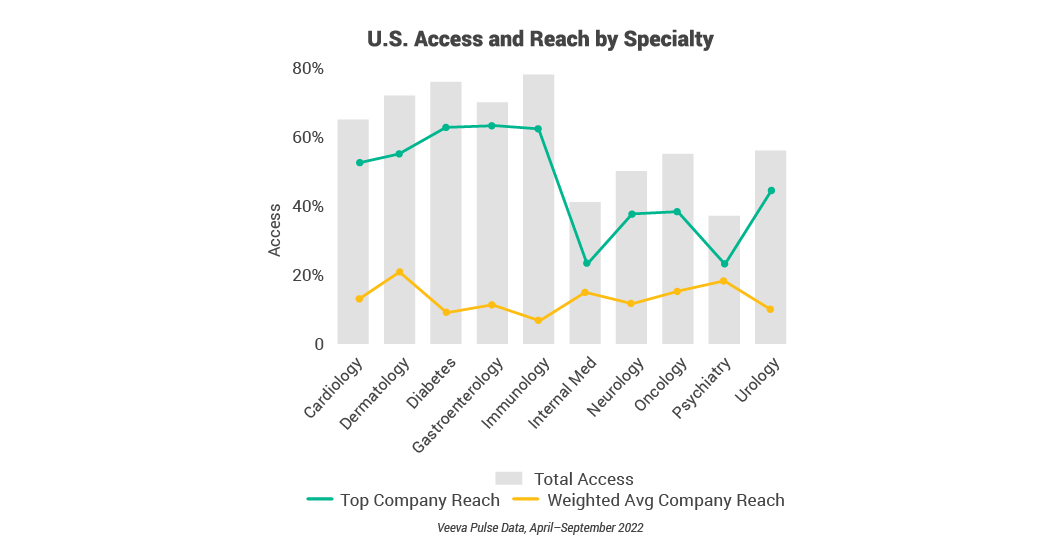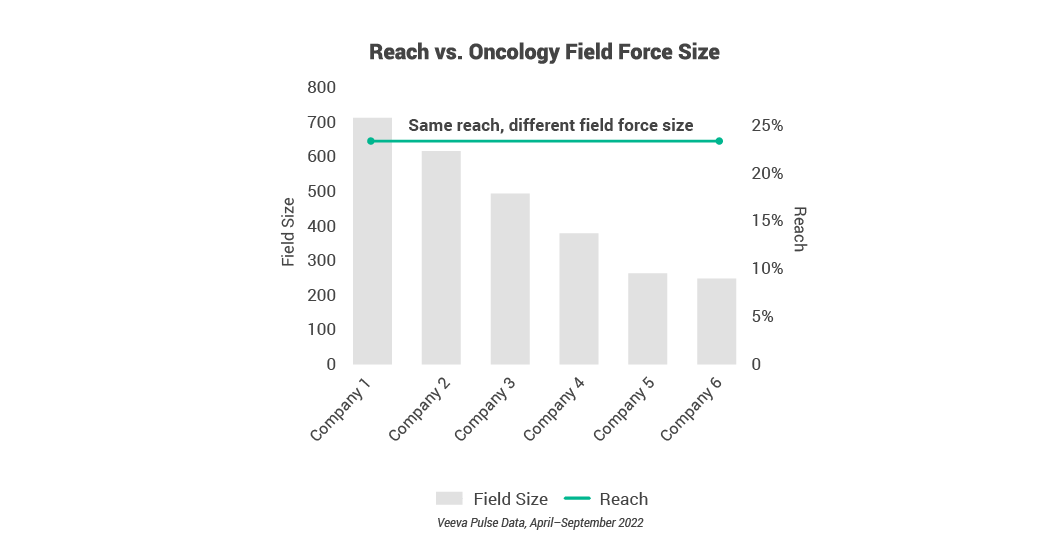Blog
3 Insights on HCP Access to Help Improve Field Activities
Dec 23, 2022 | Dan Rizzo
Dec 23, 2022 | Dan Rizzo
HCP access, historically measured by in-person meetings, hit an all-time low of roughly 20% during the pandemic. Now, access has rebounded to an average of 60% across top specialties, but in a different way. Understanding how HCPs engage – and who they engage with – has evolved and is essential to creating an effective commercial strategy.
Analysis of Veeva Pulse data, representing 600 million annual HCP-rep interactions globally across more than 80% of the industry, shows that as access has rebounded, it is increasingly digital. In addition, the data reveals that HCPs in some specialties are highly selective and limit access.
Our November 2022 Veeva Pulse Field Trends Report provides a valuable industry benchmark for HCP access, engagement activity, field execution, and how digitally-enabled field teams spend time with HCPs more effectively. Here are three top takeaways to guide your field execution strategies.
1. HCP access has rebounded to 60% and is boosted by a mix of in-person and video
Today, HCPs are more accessible than some companies realize, but engagement is increasingly virtual. Of accessible HCPs, more than 50% meet with reps via a hybrid mix of in-person and video channels (Figure 1). And a blend of in-person and video has a 3x greater promotional response than in-person alone, as reported in the July 2022 Veeva Pulse Field Pulse Trends Report.

Figure 1
2. Some specialties are highly selective, and access is not the same for everyone
It’s critical for field teams to understand that all HCP specialties are not equally accessible. In fact, 50% of HCPs are highly selective and limit their access to three or fewer biopharmas. Urology, psychiatry, oncology, and internal medicine are the most selective. For example, most oncologists meet with three or fewer companies, and 30% of psychiatrists limit access to just one company. On the other hand, immunology, diabetes, and dermatology are the least selective. More than 70% of immunologists are accessible to four or more companies.

Figure 2
3. Digitally-enabled field teams use content, time with HCPs more effectively
On average, companies with the strongest reach have 3x the reach of their peers. For example, in diabetes, the company with the highest reach engages 63% of total HCPs versus the weighted average of 11%. That means there’s a wide gap between leading companies and the rest (Figure 3).

Figure 3
Likewise, Veeva Pulse data reveals that some field forces are more efficient than others. For example, six companies with approximately the same reach in the oncology space had significantly different field sizes, ranging from more than 700 reps on the high end to roughly 250 on the low end. In other words, more “boots on the ground” isn’t the only way to reach HCPs more effectively (Figure 4).

Figure 4
Further analysis of Veeva Pulse and Veeva Compass data shows that commercially successful field teams in oncology use their access more effectively to get 30-40% more HCP meetings against targets, use content 4-5x more frequently, and achieve 70-80% more treatment starts compared to their competitors.1
Global and regional engagement trends
In addition to the above findings, the full-length report covers other engagement trends at the global level as well as regional views for the U.S., Europe, Asia Pacific, and Latin America markets. Using the insights in the report, biopharma companies can compare engagement activity trends by channel, region, field force, and company size. The report also provides trends for key quality metrics such as meeting duration, email opens, and more.
Veeva’s in-depth analysis helps biopharma companies understand the industry’s trends and provides data to inform field force strategy and execution to achieve commercial success.
Download the Veeva Pulse Field Trends Report to access all the field trends and find out what’s happening in your region.
1Veeva Pulse and Compass, April 2022 – September 2022